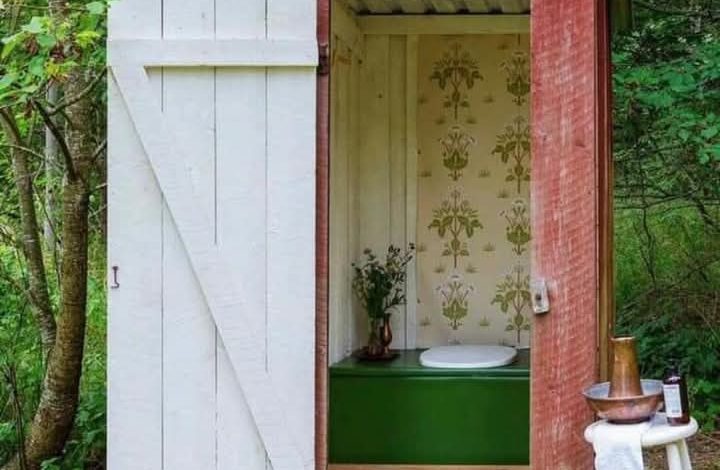The Charm of Rustic Outdoor Toilets: A Step Back in Time

ADVERTISEMENT
The Charm of Rustic Outdoor Toilets: A Step Back in Time
Introduction
Nestled in nature and offering a quaint, minimalist aesthetic, rustic outdoor toilets have an undeniable charm. Once a necessity in rural areas, these simple structures are now appreciated for their nostalgic value and eco-friendly design. The image above depicts a beautifully crafted outdoor toilet with an inviting blend of practicality and rustic elegance. This article explores the history, functionality, and modern appeal of these timeless structures, offering a glimpse into their enduring relevance.
The Historical Significance of Outdoor Toilets
Outdoor toilets, often referred to as outhouses, were a standard feature in homes before indoor plumbing became commonplace. These small, detached buildings served a vital function, offering a private space for sanitation. Constructed with basic materials like wood, they were typically located a short distance from the main house.
In the past, outdoor toilets were a reflection of resourcefulness. Builders utilized local materials, ensuring the structures blended harmoniously with their surroundings. They often included a simple bench seat, a ventilation system, and sometimes even decorative elements to make the space more pleasant. Despite their simplicity, they symbolized innovation in an era when sanitation was still developing.
Modern-Day Appeal of Rustic Outdoor Toilets
Today, outdoor toilets are experiencing a resurgence, particularly in rural retreats, cabins, and eco-friendly homes. The design in the image above demonstrates how these structures have been reimagined with a touch of elegance. The combination of natural wood, a patterned interior, and carefully placed decor transforms the utilitarian outhouse into a serene, aesthetically pleasing space.
Eco-conscious individuals appreciate outdoor toilets for their sustainability. Many modern designs incorporate composting systems that minimize water usage and reduce environmental impact. These systems are especially popular in off-grid locations where traditional plumbing is not an option.
ADVERTISEMENT
Moreover, the sense of reconnecting with nature is a significant draw. Surrounded by trees and fresh air, using an outdoor toilet becomes a unique experience that blends practicality with tranquility. For many, it’s a way to step back from the fast pace of modern life and embrace a simpler, more mindful approach to living.
Key Features of a Rustic Outdoor Toilet
- Design and Structure: The design focuses on blending with the natural environment. Wooden panels, corrugated roofs, and earthy tones are common choices.
- Interior Comfort: Despite being simple, modern outhouses often include thoughtful touches like wallpaper, small plants, and functional decor to create a welcoming atmosphere.
- Eco-Friendly Systems: Many incorporate composting toilets or dry systems, which are both sustainable and efficient.
- Accessibility and Maintenance: Designed for ease of use, they are built to last with minimal upkeep required, making them practical for remote locations.
Conclusion
Rustic outdoor toilets may seem like a relic of the past, but their enduring charm and practicality make them a valuable feature even today. They connect us to simpler times, offering a blend of functionality and aesthetic appeal that modern amenities sometimes lack. Whether used as a primary toilet in off-grid living or as a whimsical addition to a rural retreat, these structures remind us of the beauty of thoughtful, sustainable design.
As we move forward in an age of convenience, it’s worth pausing to appreciate the humble outdoor toilet—a timeless symbol of resourcefulness, simplicity, and harmony with nature. 🌿




